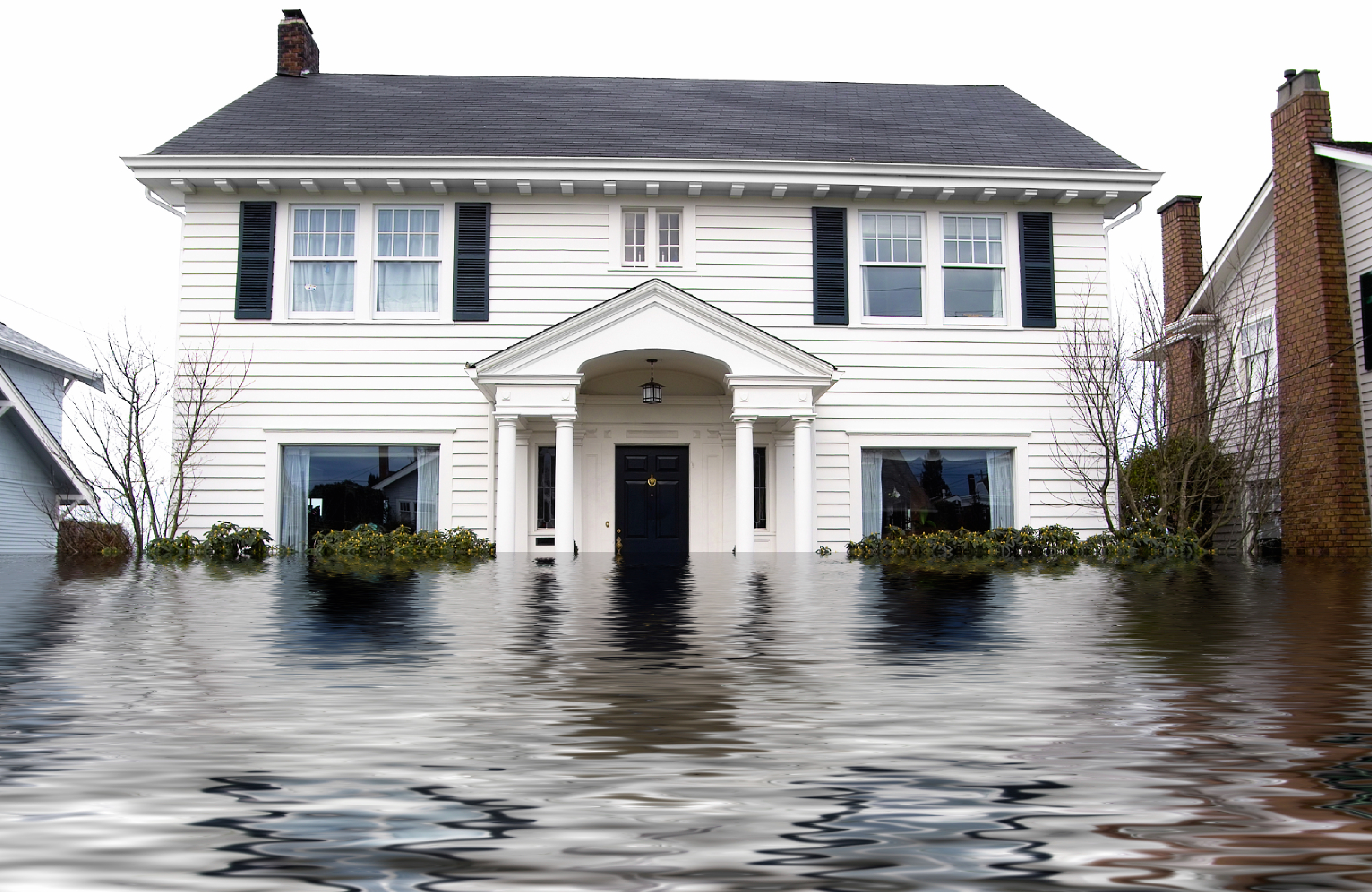NATURAL FUNCTIONS OF FLOODPLAINS
Areas adjacent to the coast are most at risk to life and severe property damage from dangerous coastal surge. Coastal floodplain areas function to attenuate the impacts of coastal surge flooding. These floodplains along the coastal barrier islands, bays and the other estuarine coastline provide a buffer to accommodate temporary flooding (tidal or storm driven). This buffer, in combination with prudent development, allows for buildings to weather intermittent flooding with a minimum of disruption and cost.
However they are also the most popular areas for people to live. That's why government tries to strike a balance between public needs and private property, regulating the kind of development allowed and where it can be located. These floodplains also offer valuable coastal habitat for plants and animals, and typically are a highly prized recreational resources (providing access to coastal waters) as well.
Flooding is a natural process that forms and maintains floodplains and coastal zones. Periodic flows of water that overtop the banks of canals and edges of sloughs and that encroach upon coastal areas are the lifeblood of the floodplain corridors, marshes, beaches, and other natural areas. The seasonal variability of flow, incessant wave action, and intermittent extreme events all combine to determine both the physical structure and the biological diversity of floodplain areas.
Finding the delicate balance between human needs and environmental sustainability is a difficult undertaking. Successful, sustainable flood hazard reduction solutions need to be based on the forces at work in floodplains and coastal zones and also on the resources that these floodplain areas provide. Natural floodplains have interrelated functions, which in their natural state provide numerous resources and benefits to society.
Flooding from hurricanes and storms is the key process in providing such tangible benefits as increased soil fertility, wetland creation, rejuvenation of spawning bed areas, creation of barrier islands, promotion of aquatic habitat, transportation of large woody material that provides fish habitat and bank stability, promotion of plant establishment, and the alteration of channels and shoreline features such as dunes. These resources are described in detail in numerous documents, notably A Unified Program for Floodplain Management (Federal Interagency Floodplain Management Task Force, 1994) and The Natural & Beneficial Functions of Floodplains (Task Force on the Natural and Beneficial Functions of the Floodplain, 2002).
Both freshwater and coastal ecosystems are shaped and nurtured by the characteristics of the water, including where it originates as well as its flow and levels. The seasonal and storm-generated variations in water flow, including periodic flooding, are part of the normal function of the floodplain zone. These variations establish stream banks, keep erosion and accretion in equilibrium, replenish soils, recharge groundwater, and filter impurities. In coastal areas, water differences are based on tides, currents, wave action, and storm surges—all of which form shorelines, coastal wetlands, dunes, barrier islands, and estuaries. High flows are critical to maintaining vegetation because they transport sediment and nutrients to new locations within the connecting floodplains.
The dimensions and configuration of a stream channel or coastline are determined by ongoing geomorphic processes. For example, the natural transport of sand and sediment dictates the migration of channels, shorelines, dunes, and barriers. This process, in turn, is influenced by the geological composition of the landforms; the caliber, rate, and volume of sediment movement; and the presence or absence of vegetation. Although the geomorphology of waterways and shorelines is constantly changing, in their unaltered state they exist in dynamic equilibrium, which cannot be disturbed without consequences.
Floodplain and coastal vegetation helps to stabilize the shoreline and river banks, provide habitat for terrestrial and aquatic wildlife, control erosion and sedimentation, and improve water quality by filtering pollutants. Healthy floodplain corridors often provide the highest concentrations of plant and animal communities in a watershed, providing a stable source of biodiversity.
The variable flows of water in freshwater and coastal areas have resulted in uniquely adapted species of aquatic and terrestrial organisms—they depend on the variation in water conditions for spawning, seed dispersal, elimination of competing vegetation, and nursery areas for their young. The ecological integrity of floodplain vegetation depends on the supply of water, sediment, and nutrients; the dynamic stability of the system; the methods of plant colonization; rates of growth and decay; and the contribution of organic matter to the water body.
Naturally functioning freshwater floodplain and coastal areas are the product of a tightly interconnected system of all of the processes described above. The ecosystems sustain themselves by means of these ongoing processes. Human activity, especially urbanization and alteration of the flooding process as a means of controlling and/or storing water, interrupts these natural processes and thus disturbs the functions and overall health of the ecosystem.
All of these activities in pursuit of development, urbanization, and flood protection can yield specific, usually localized economic and social benefits, but the long-term impacts can place both humans and nature at higher risk. Further, in various locations across the nation they have proved counterproductive, resulting in a system of “reactive” engineering through which the symptoms of the problem are treated at great expense while the underlying causes are not addressed and flood losses continue to rise.
Realizing that wetlands, soils, marshes, unspoiled waterways, and related resources and their functions are crucial components of ecosystems vital to human life, it is important for development activities to be designed to promote the continued natural functions of our floodplains.

